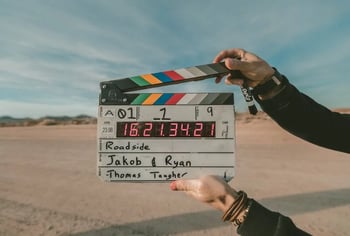Location Scouting in Video Production: Finding the Perfect Backdrop
"Explore location scouting's role in video production: its script synergy, practicalities, and balancing aesthetics with logistics.
Location scouting is the unsung hero of video production. The right backdrop not only enriches visual storytelling but also provides context, mood, and authenticity.
However, finding that perfect spot is more than just aesthetics—it involves practical considerations, budget constraints, and logistical planning. In this article, we delve deep into the art and importance of location scouting in video production.
1. The Role of Location Scouting
Location scouting is the process of finding and securing locations for filming. Whether it's a bustling city street, a tranquil lakeside, or an ornate ballroom, locations infuse videos with a sense of place and atmosphere. They can serve as a character in themselves, offering depth and enhancing the narrative.
2. Starting with the Script
The script, or the storyline, is the initial touchpoint. It offers hints, explicit or subtle, about where the story unfolds. Before you begin scouting, review the script meticulously. Identify scenes requiring specific settings and make a list of desired attributes.
3. Research and Preliminary Exploration
Once you've outlined your needs:
a. Online Research: Begin with online platforms like Google Maps or location scouting websites. These provide a preliminary idea without the immediate need for physical travel.
b. Local Contacts: Engage with local film commissions or tourism boards. They often have databases or can recommend popular spots.
c. Visit in Person: While digital resources are invaluable, there's no substitute for an actual visit. Physically exploring potential spots offers a tangible feel and uncovers nuances overlooked online.
4. Practical Considerations
Aesthetics are paramount, but practicality can't be sidelined:
a. Accessibility: Is the location easily accessible for cast, crew, and equipment? Consider transportation logistics and potential challenges.
b. Facilities: For prolonged shoots, amenities like restrooms, changing rooms, or catering facilities become essential.
c. Acoustics: The audio quality is as vital as the visuals. Check for ambient noise levels, especially if the location is near busy roads or industrial areas.
d. Lighting: Natural lighting can make or break a scene. Visit potential locations at the same time of day you plan to film to assess the light quality.
5. Securing Permissions
Most locations, especially private properties or public spaces with restrictions, require permissions:
a. Legal Agreements: Ensure you have written consent to film. This could be a formal contract or a location release form.
b. Fees: Some locations command a fee, while others might be free. Ensure you're clear about costs upfront to avoid budgetary surprises.
c. Restrictions: Be aware of any filming restrictions, like time limits or specific areas that are off-limits.
6. Budget Implications
Every location comes with associated costs—travel, accommodation for overnight shoots, permits, or even property rentals. It's essential to align your choices with your production budget, seeking alternatives if costs spiral.
7. Backup Locations
In the unpredictable world of filmmaking, always have a Plan B. Whether it's sudden weather changes, unexpected noise disruptions, or permit issues, having backup locations can save time and prevent production delays.
Conclusion
Location scouting, while demanding, is a fulfilling process that brings the world of the script to life. By marrying aesthetics with practical considerations and diligent planning, you can find the perfect backdrop that elevates your video production to new heights.
Written by James Bryant Video strategist and co-founder for Venture Videos — a full-service video production agency that specialises in producing creative videos & campaigns that get real results.









